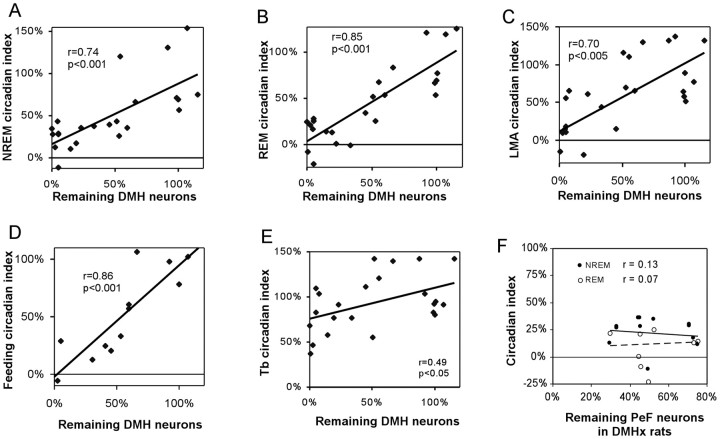Figure 3.
After DMH lesions, numbers of surviving DMH neurons correlate significantly with circadian indices of NREM sleep (A), REM sleep (B), LMA (C), and food intake (D), but not Tb (E). The trend lines for sleep, LMA, and feeding, but not Tb, intersect the y-axis near zero, suggesting a greater DMH influence on sleep, LMA, and feeding than Tb rhythms. In DMHx rats (>80% loss of DMH neurons), additional loss of perifornical neurons does not correlate with additional reductions in REM or NREM circadian indices (F). Circadian indices and cell counts are normalized to 100% for sham-operated controls.

